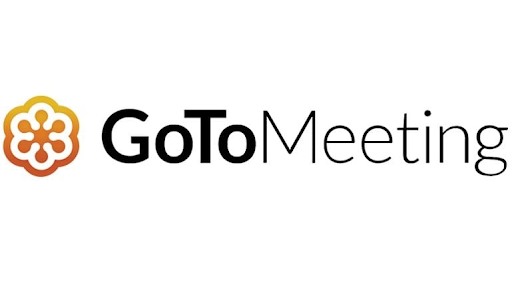Development team
Valuable Data Communication Systems For Your Business
Data communication is the electronic transfer of data from one location to another. A truly effective data communication system will enable present and future information systems to deliver your necessary data as needed. This is why leveraging such technology is crucial in the business world, especially for managers.
Since most organisations collect and transfer data across large geographic distances, an efficient data communication system is critical. And making use of modern communication systems can also improve the flexibility of data collection and digital transmission modes. We’ll show you how below.
Key Takeaways on Data Communication Systems For Businesses and Managers
In case you’re in a rush, here are some key takeaways you’ll want to know about.
- Data Communication’s primary role is to facilitate electronic data transfer across locations. This enables efficient and timely information delivery, which is key to your business operations. It also allows virtual organisations to operate without physical boundaries, enhancing collaboration and enabling work-from-anywhere models for staff, executives, and outsourced dedicated teams.
- Workplace benefits include better decision-making efficiency via timely data access, supporting just-in-time inventory, and lowering costs, which benefits competitive positioning. It also shortens product development cycles by ensuring faster communication and improving team productivity and collaboration.
- Managerial knowledge areas are very important in this regard to make the best use of data networks, Internet and intranet usage, network security, and the organizational impact of data communication. Awareness of global issues and the ability to leverage collaboration tools (e.g., GoToMeeting, Zoom) for cost-effective, customer-focused operations helps further improve overall operations.
- Collaborative applications and tools such as GoToMeeting and alternatives like Zoom or WebEx, offer virtual meeting capabilities with features like screen sharing, private chat, and security to facilitate remote communication.
What is Data Communication?
Data communication is the electronic transfer of information from one point to another, serving as the backbone of modern organizational communication and digital operations.
At its core, data communication involves transmitting digital data between computing devices, networks, and systems through various transmission media and communication protocols.
Some of the most essential elements of any Data Communication systems include:
- Data Source: The origin point of information
- Transmitter: Device that sends the data
- Communication Medium: Channel through which data travels (e.g., fiber optic cables, wireless networks)
- Receiver: Device that receives and processes the data
- Destination: The final point where data is intended to be used
The Importance of Effective Data Communication Systems in the Workplace
Data communication applications can enhance decision-makers’ efficiency and effectiveness in many ways. For example, they support just-in-time delivery of goods, which reduces inventory costs and improves competitive edge. Many large corporations, such as Walmart, The Home Depot, and United Parcel Service (UPS), use data communication technologies to stay ahead of their competitors.
Data communication systems also enable organizations to use e-mail and electronic file sharing to improve efficiency and productivity. An effective communication network can shorten product and service development life cycles by delivering information to those who need it faster and more efficiently.
Here are some of the ways data communication technologies affect the workplace:
- Online training for employees via virtual classrooms. Plus, employees get the latest technology and product information immediately to support just-in-time information delivery.
- Internet searches for information on products, services, and innovations keep employees up to date.
- The Internet and data communication systems facilitate lifelong learning, which will be an asset for future knowledge workers.
- Boundaries between work and personal life are less clear-cut as data communication is more available in both homes and businesses. This supports flexible work environments. And the increase in telecommuters is an example of this trend.
- Enhances organizational productivity
- Web and video conferencing are easier, reducing business travel costs and operational costs and enabling global collaboration.

Managers need a clear understanding of the following areas of data communication:
- The basics of data communication and networking
- The Internet, intranets, and extranets
- Wired and wireless network models
- Network security issues and measures
- Organisational and social effects of data communication
- Globalisation issues
- Application layers of data communication systems
For more information on the basics of data communication systems, you’ll likely find this video valuable to nail down the various terms!
The OSI Model
The Open Systems Interconnection (OSI) Model represents a crucial conceptual framework that managers and business professionals must understand in order to optimize their data communication systems.
This comprehensive model breaks down network communication into seven distinct layers, each vital in ensuring efficient and secure data transfer across complex digital environments.
- Physical Layer: The Foundation of Connection The physical layer represents the literal hardware connection between devices. For managers, this means understanding the tangible infrastructure that enables data transmission, such as ethernet cables, wireless networks, and network interface cards.
- Data Link Layer: Ensuring Reliable Node-to-Node Transfer This layer is critical for ensuring accurate data transfer between adjacent network nodes. It handles error detection and provides a reliable communication channel, which is essential for maintaining the integrity of business communications.
- Network Layer: Routing and Forwarding Intelligence The network layer manages the routing and forwarding of data packets across different networks. In a business context, this layer is crucial for enabling communication between various departments, branch offices, and global teams, regardless of geographic boundaries.
- Transport Layer: Guaranteeing Complete Data Transfer Ensuring that data is transferred completely and accurately, the transport layer is vital for business operations. It manages data segmentation, flow control, and error recovery, which are critical for maintaining the reliability of communication systems.
- Session Layer: Managing Application Interactions This layer establishes, manages, and terminates sessions between applications. For virtual organizations, understanding this layer helps in maintaining effective collaborative environments and managing complex communication protocols.
- Presentation Layer: Data Translation and Formatting The presentation layer translates data formats between applications, ensuring compatibility across different systems. This is particularly important in today’s diverse technological landscape, where businesses use various software and platforms.
- Application Layer: Direct Network Services The topmost layer provides network services directly to end-users and applications. It includes familiar protocols like HTTP, FTP, and SMTP, which are essential for email, web browsing, and file transfers in modern business environments.
Managers who comprehend the OSI Model can:
- Improve network design and implementation strategies
- Enhance troubleshooting capabilities across communication systems
- Make more informed decisions about technology investments
- Support more efficient and secure data communication infrastructures
By leveraging the insights the OSI Model provides, businesses like yours can create more robust, flexible, and efficient data communication systems that support their operational goals and enable seamless digital collaboration.
For more detailed information on implementing OSI Model principles in your organization’s communication strategy, consider consulting with digital transformation experts at fram^.
Data Communication Systems Empower Virtual Organisations
Data communication systems make digital organisations possible. By using a data communication system’s capabilities, organisations are not limited by the physical path. Digital communication between parties can cross geographic boundaries via a transmission medium to enjoy instant messaging, share ideas, feedback, etc., more quickly and effectively.
As a manager, you must collaborate with other organisations, outsource certain functions to reduce costs, etc. These tasks will be much easier with a reliable system for sending and receiving the right information to the right people.

Data communication is also the basis of virtual organisation as it enables e-collaboration. Staff, or even outsourced dedicated development teams, can be located worldwide but can still collaborate with their colleagues no matter where they are. As long as there is an effective data communication system, employees can essentially work from anywhere.
This also applies to executives who are key decision-makers. For example, when launching a new product, executives will decide on the date and time, which can be confusing if they’re not in the same time zone. Having a data communication system will ensure precise timing across different time zones.
Applications for Data Communication
E-collaborations and virtual meetings are other important applications of data communication systems for managers. These applications are cost-effective and improve customer service. One example of an e-collaboration tool is GoToMeeting.

GoToMeeting is a Web-conferencing service hosted by Citrix Online, a division of Citrix Systems. It can run on both PCs and Macs and offers high-definition video conferencing, enabling you to see your fellow meeting attendees.
It also allows you to show them the applications and files on your desktop. The other attendees can share their desktops as well. Users can either chat with all the attendees or speak privately with an individual participant. They can also choose free VoIP, phone conferencing, or both.
GoToMeeting allows users to save, replay, post, or e-mail important interactions and presentations with audio. It also offers comprehensive security and privacy features. Meetings cannot be viewed by anyone except meeting attendees.
Some alternatives to GoToMeeting include Zoom Video Communication, Inc., WebEx (Cisco), My Web Conferences (MyTrueCloud), Chime (Amazon), and Skype (Microsoft).
For help with your digital and software needs, feel free to contact fram^.
We’re a leading outsourcing and software development company in Vietnam helping companies around the world make the most of digital transformations and product development!


